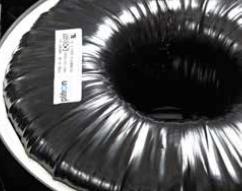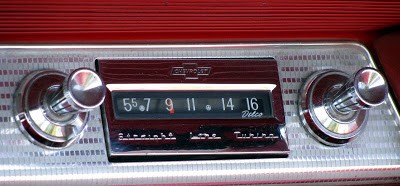 NBT technology is a proprietary noise filtering technology that eliminates the need for external filters, such as capacitors, and other components that can fail over time.
NBT technology is a proprietary noise filtering technology that eliminates the need for external filters, such as capacitors, and other components that can fail over time.
Using NBT filtering technology, Torus Power toroidal transformers carefully balance the inherent inductance, capacitance, and resistance characteristics, enabling the transformer to act as a highly effective low-pass filter. The corner frequency for noise attenuation is 2 kHz with an attenuation rate of 12dB/decade to 500 kHz.
Torus Power’s NBT filtering attenuates both Differential Mode (L-N) and Common Mode (G-N) noise.
In layman’s terms…
Authorities ag ree that electrical power lines deliver more than just pure 50 or 60 Hertz (50 or 60 cycles per second) alternating current (AC). They also deliver noise and interference from motors, dimmers, switches and other electric and electronic devices that are connected to the power grid.
ree that electrical power lines deliver more than just pure 50 or 60 Hertz (50 or 60 cycles per second) alternating current (AC). They also deliver noise and interference from motors, dimmers, switches and other electric and electronic devices that are connected to the power grid.
In the simplest of terms, NBT filters out this noise and interference and allows the pure AC to pass through the Torus Power unit to your components.
Torus Power’s Narrow Bandwidth Technology acts as a low-pass filter. We know, when we talk about electrical power, that the “good stuff” is the 50 or 60 Hertz (Hz for short) alternating current that comes from the generating station. In audio terms, 50 or 60 Hz can be considered to be low frequencies – in the bass range. The noise and interference, however, are vibrating at higher frequencies, often much higher.
So how does a low-pass filter work? Let us use the analogy of a vintage automobile. Let’s hop into that fine-looking ’57 Chevy hardtop over there. Turn the ignition key to the accessory position, turn the radio on and tune it to your favorite AM radio station. That’s right, AM.
Entertainment equipment sure doesn’t get much simpler than this! Although we see two knobs there are actually three controls. The knob on the right is the tuning knob, used to tune through the AM radio band and select the desired radio station. On the left side there are actually two controls, mounted in dual concentric fashion. The control that’s closest to the driver is the volume control.
The control that’s closest to the dashboard is the tone control. For those who are not familiar with vintage equipment like this, here’s how the tone control works. When the control is turned full clockwise the sound that comes from the speaker is as close to high fidelity as you can get from a ‘50s car radio. As you turn the tone control counter-clockwise, the higher (treble) frequencies are gradually cut or attenuated, leaving the bass and midrange intact and unaffected.
This tone control from bygone years is an example of a variable low-pass filter. It allows the user to selectively reduce the high-frequency content in the radio broadcast without making any changes to the lower frequencies. Another type of filter is the fixed low-pass filter. By design, the fixed low-pass filter allows low frequencies to pass through and at the same time it cuts or filters out everything above a specified corner frequency.
In a Torus Power transformer, the NBT filtration allows the 50 or 60 Hz AC to pass through completely, while cutting noise and interference by as much as 50 decibels (50 dB). A decibel is a unit of measurement that is generally considered to be the smallest change in volume that the human ear can detect. A reduction of 50 dB is as dramatic as the difference between a 100,000 watt concert sound system and the car radio we talked about earlier.
What benefit does Torus Power’s NBT offer to the user? Our customers say it best:
“I was astounded by the increased clarity, density, and smoothness of the sound; and, the tremendous increase in dynamic range.” – Jerry S., USA
“Torus Power units were lowering the noise floor of the entire system into nonexistence…highly recommended” – Jeff Fritz, Editor-in-Chief, SoundStage!
